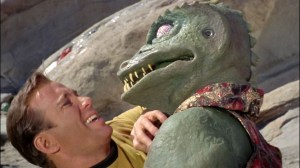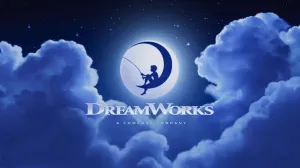When Star Trek: Enterprise first aired in 2001, it had the unenviable task of following its highly successful predecessors The Next Generation, Deep Space Nine, and Voyager during the tail end of Trek’s nearly 20-year Golden Age. None the less, it looked like the creators had had the right idea with the general plot of the show. As a prequel set nearly a century before Captain Kirk, Enterprise was supposed to explore the birth of Starfleet and humanity’s first steps into interstellar exploration, and in doing so offer something new to the spin-offs that had come before it. Given the success of other Star Trek properties, there seemed no reason Enterprise couldn’t make a similar mark. But network meddling, uneven writing, and declining ratings led to a shortened four-season run—and Enterprise became the only modern Trek series cancelled before hitting the seven-year mark.
Videos by ComicBook.com
Yet over two decades later, fans have begun to rediscover Enterprise, appreciating the series more with fresh eyes. What once seemed like a mostly unnecessary prequel has become acknowledged as a fascinating look at how the Federation we know and love came to be. And while the series often stumbled, when Enterprise got it right, it delivered some of the franchise’s boldest, weirdest, and most emotional episodes. From reimagining classic villains to laying the groundwork for the Federation, Enterprise quietly earned its place in the franchise’s legacy. Enterprise may never escape its reputation as Trek’s least-loved spinoff, but these stories prove it’s far from forgettable.
Here are our picks for the 10 best episodes of Star Trek: Enterprise, ranked.
10) “First Flight” (Season 2, Episode 24)
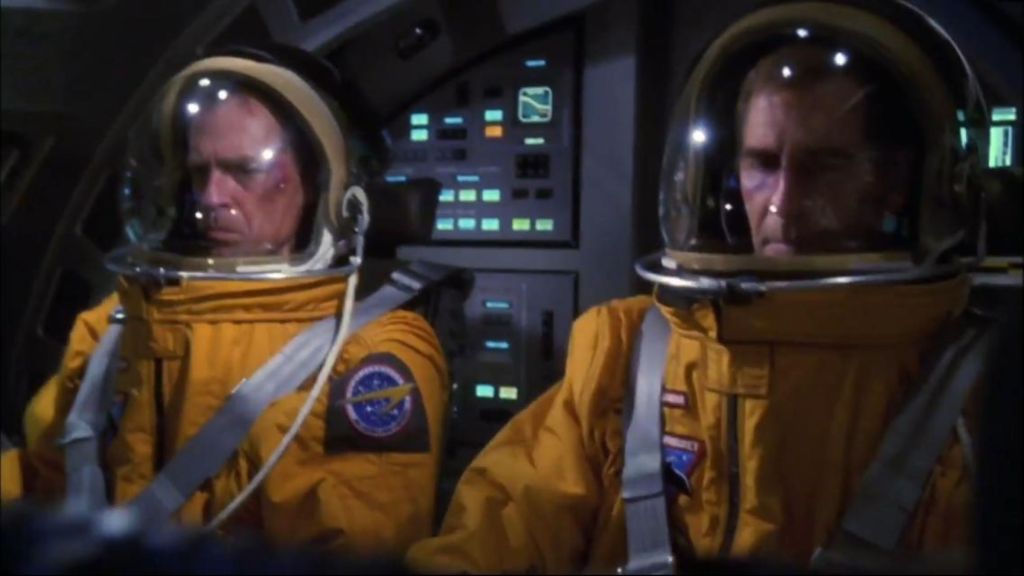
Before Archer was Captain of the NX-01, he was a test pilot vying to push humanity past Warp 2 and become the fastest man in the universe! “First Flight” takes us back to the early days of interstellar travel, when humanity hadn’t quite worked out how to get to Warp 3, let alone 10. Enterprise was originally intended by creators Berman and Braga to recapture the energy and high stakes competitiveness of the 1960s space race, and First Flight sees Archer compete with his rival A.G. Robinson (Keith Carradine) for a chance to lead the Warp 5 Program. We can’t help but admire the enthusiasm these brave explorers must have had to want to compete simply for the privilege of potentially blowing up!
The episode succeeds in capturing the “early pioneer” spirit that Enterprise was always meant to channel—scrappy engineers, dangerous test flights, and a vision of exploration still in its infancy. More character study than action piece, “First Flight” gives Archer depth as a character, and while he never quite reaches the heights of the Tom Cruise Top Gun style hero the writers seemingly wanted him to, the episode serves as a reminder of the link between Star Trek and our own time, and that Starfleet wasn’t born from nowhere, but from risk-takers willing to put their lives on the line.
9) “Carbon Creek” (Season 2, Episode 2)
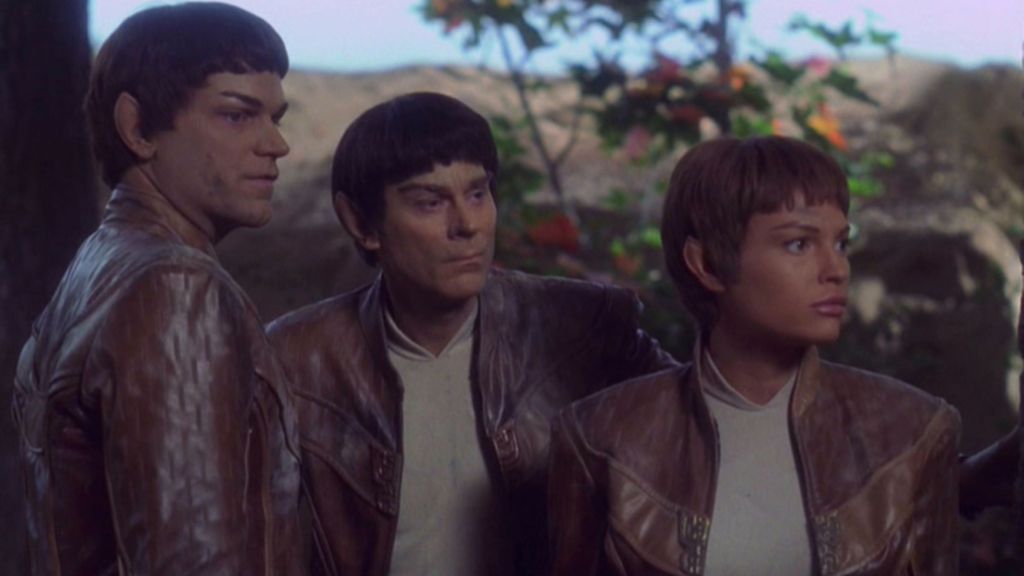
A fan favorite episode, “Carbon Creek” is Enterprise’s sly twist on mankind’s First Contact with extra-terrestrial beings. Over dinner, T’Pol tells Archer and Trip a story about her grandmother—who, along with two Vulcan crewmates, crash-landed in small-town Pennsylvania in 1957. Who doesn’t love a classic E.T. or Roswell-like tale of an alien crash landing? And who doesn’t love a period piece? Well Carbon Creek did both!
It’s a brilliant fish-out-of-water tale filled with plenty of dry Vulcan humor and 1950’s Americana, but it also reframes Trek’s history: maybe humans and Vulcans had a quiet first encounter long before Zefram Cochrane’s warp flight. According to T’Pol, one of the stranded Vulcans stayed on Earth after the others rescue to continue to observe humans, he could very well have lived long enough to survive past the ‘official’ first contact, decades later. After all, Star Trek: Picard revealed humans were Vulcans’ pet project long before 2063. Archer and Trip are skeptical, but whether or not T’Pol’s story is true, the final shot of her holding her grandmother’s 1950s handbag leaves fans delightfully uncertain.
8) “Proving Ground” (Season 3, Episode 13)

Enterprise’s Season 3’s Xindi arc was divisive, but “Proving Ground” stands out thanks to the return of Jeffrey Combs as Andorian Commander Shran, the reluctant ally of Archer and the crew. While Archer desperately hunts for the Xindi superweapon, Shran turns up and offers much needed help —but secretly plans to steal the weapon for Andoria to use against the Vulcans, whom the Andorians are angry at for refusing to help stop the Xindi.
It’s a tense high stakes co-operation between two reluctant allies. Archer and Shran respect each other, but are both aware neither can fully trust the other. Archer allowed his own personal frustrations with Vulcan’s to cloud his judgement and because of this often acts as an ally to Shran. This uneasy alliance became one of Enterprise’s strongest dynamics but when Shran breaks that trust to steal the Xindi weapon, The Enterprise crew quickly outsmarts him, proving that while humanity is willing to work with other species, they won’t be taken for fools—quite right too! The episode was notable in helping set the stage for the Andorians’ eventual role in founding the Federation.
7) “Regeneration” (Season 2, Episode 23)

How do you worm the Borg in a 22nd-century prequel without breaking canon? Arguably it would have been better to leave this famous villain out of it to preserve the established timeline but given the Borg’s popularity, it’s no surprise the writers were determined to find a way to include them. And to be fair, Enterprise found the perfect loophole. In “Regeneration,” Arctic researchers discover frozen Borg debris left over from Star Trek: First Contact. The drones wake up, do what Borg do best—assimilate—and set out to contact the Collective.
The NX-01 crew, completely unprepared, must improvise against an enemy they don’t yet know or understand. Even though we technically know that the Borg won’t succeed, the tension is real, and the episode cleverly deepens the franchise’s timeline. It’s a rare prequel stunt that actually works. Arguably the full potential of a Borg attack during an era when tech was even less sophisticated was never lived up to, but it’s a good old fashioned big boss battle and we’re here for it.
6) “Borderland” / “Cold Station 12” / “The Augments” (Season 4, Episodes 4–6)
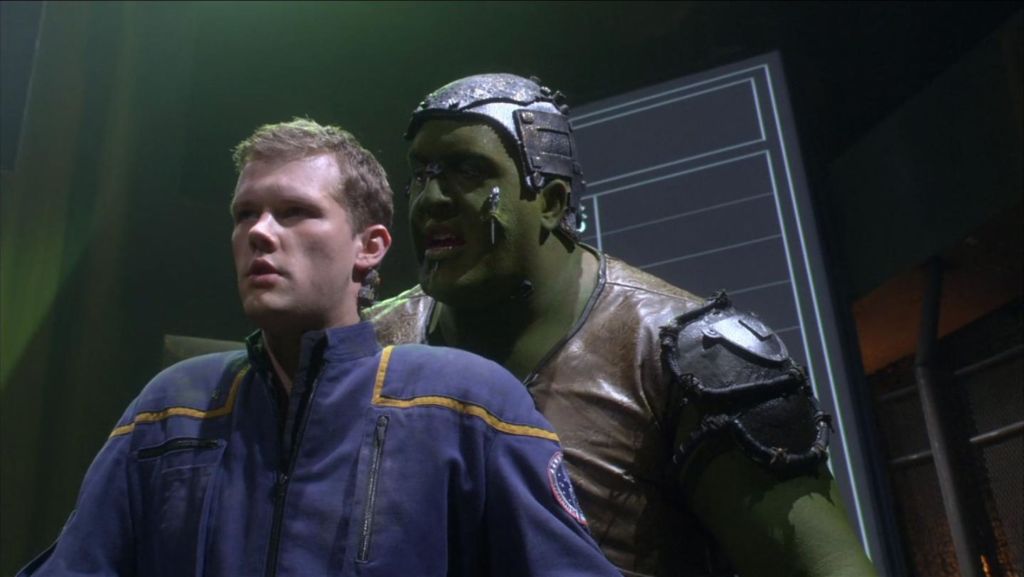
Season 4 leaned heavily into mini-arcs, thanks to the direction of incoming writer/showrunner Manny Coto. The epic three-parter of “Borderland” / “Cold Station 12” / “The Augments”is peak Enterprise. Featuring a cameo from the talented Brent Spiner as Dr. Arik Soong—ancestor of the man who created Data—the arc dives into the legacy of genetic engineering and the fallout of the Eugenics Wars.
Spiner’s performance alone, fabulous as always, elevates these episodes, but the Augments themselves, villains from the ‘Eugenics wars’, who are distantly related to Star Trek II‘s iconic villain, provide a chilling echo of Khan Noonien Singh and what’s to come. It’s a story of hubris, rebellion, and what happens when humanity tries to play God. In many ways, this arc feels like the show finally embracing its role as a prequel and it was one of the first signs that Enterprise was starting to up its game—unfortunately a little too late for a season 5 renewal.
5) “Demons / Terra Prime” (Season 4, Episodes 20 & 21)

Unfortunately, Enterprise’s actual finale, “These Are the Voyages…,” has become infamous for all the wrong reasons; having the final episode turn out to be a holodeck simulation was an awful ‘it was all a dream’ type trope ending that didn’t give the series the send-off it deserved. Ask a Trekkie and you’ll discover most fans agree the real ending to Enterprise is actually the two-parter of “Demons” and “Terra Prime,” that annoyingly enough, aired just before the official ending. In this two-parter, Peter Weller guest stars as xenophobic terrorist John Paxton, leader of the terrorist group Terra Prime who are threatening to destroy Starfleet Command unless Earth expels all aliens.
The personal stakes of the story are real: Terra Prime has engineered a human-Vulcan hybrid child from Trip and T’Pol’s DNA. The story becomes a parable about racism and fear, but also a rallying cry for Starfleet’s ideals. It’s a key turning point in Star Trek history as the Federation is still relatively new and there is every possibility this newfound prosperity between species could begin to fall apart in an epic way. The episode also sees humanity come into its own, going from being the relative newcomers to the intergalactic community to being leaders in the fight for interstellar peace and harmony. is one of the series’ finest moments—and a perfect thematic capstone to Enterprise.
4) “Babel One / United / The Aenar” (Season 4, Episodes 12–14)
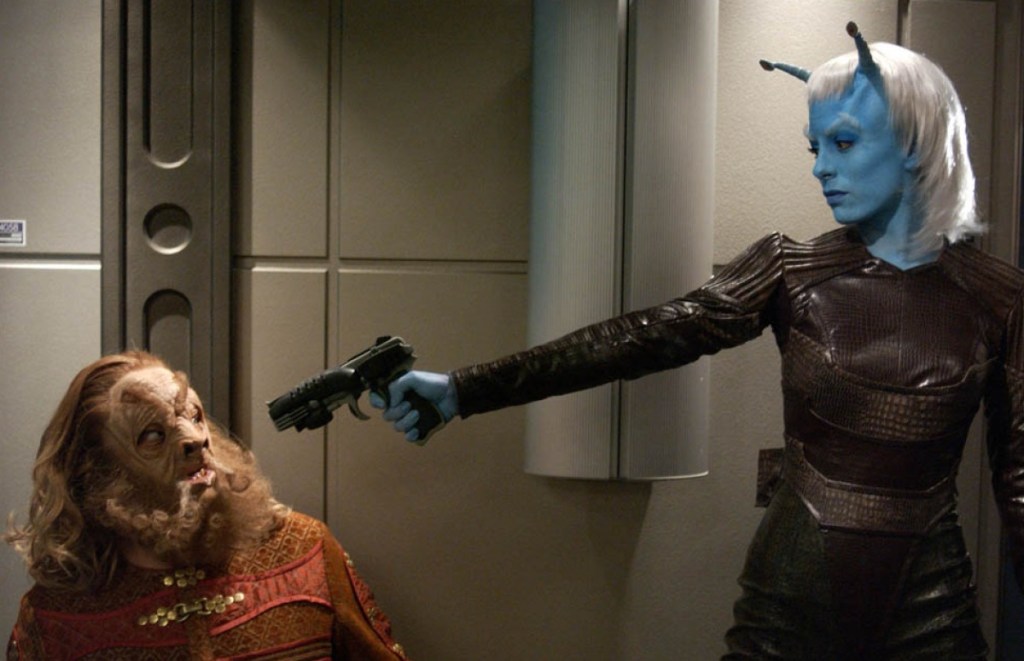
This three-parter is notable for finally delivering on Enterprise’s promise as a prequel, getting closer to the origin story of the Federation than ever before. Under new producer Manny Coto’s direction, much of Enterprise’s final season examined familiar Star Trek themes in a 22nd Century setting. The Babel One triology (a homage to The Original Series, “Journey to Babel” that introduced Andorians and Tellarites) examined the first steps taken towards building the United Federation of Planets. When Humans, Vulcans, Andorians, and Tellarites are manipulated into a conflict by the Romulans, Archer forces the squabbling species into cooperation.
The episode highlights the value that Humans can bring to the intergalactic community when we’re at our best, it’s our compassion, perceptiveness and reason that wins the day. Of course, it wouldn’t work nearly as well without Shran. Jeffrey Combs steals every scene, balancing paranoia with nobility in his character. While the series was cancelled before it could fully explore the Romulan War, these episodes show how close Enterprise came to realizing its original potential.
3) “In a Mirror, Darkly” Parts 1 and 2 (Season 4, Episodes 18 & 19)

Love it or loathe it, the Star Trek franchise wouldn’t be the same without the The Mirror Universe. Episodes featuring this dark twisted parallel reality often become fan favorites, but Enterprise’s two-parter “In a Mirror, Darkly” goes all in by setting the entire story in that reality (rather than the overused ‘how do we get back to our own universe’ plot). Evil Archer stages a coup, the Tholians seize the USS Defiant (a reference out of TOS’ “The Tholian Web”), and the cast revels in playing their villainous counterparts.
From the altered opening credits which give an abridged history of the Mirror universe, stemming from an altered version of the events of First Contact to the lovingly recreated 1960s sets, “In a Mirror, Darkly” is pure fan-service in the best way. It’s campy, it’s over-the-top, and it’s probably more fun than anything the Prime Universe characters ever did! Interestingly enough, whether intended or not, it actually contains some canonical events that become relevant for the events of Discovery many years later.
2) “Twilight” (Season 3, Episode 8)

What if Archer failed? That’s the chilling premise of “Twilight.” Set in an alternative future, after contracting a disease that prevents him from forming long-term memories, Archer is relieved of command and Earth is destroyed by the Xindi as the mission to destroy the Xindi superweapon was unsuccessful. Years later, when a cure is finally found for his condition, an older Archer and T’Pol, who has become his caretaker, attempt one last desperate mission to reset the timeline.
It’s a heartbreaker of an episode, with one of the franchise’s best cold opens (Archer watching Earth annihilated). Beyond the high stakes sci-fi concept, “Twilight” works because of its characters—showing the loyalty, sacrifice, and love that defines Star Trek at its best. Time travel episodes like this are a great way of exploring a “worst-case scenario” without the tragic ending sticking and altering cannon. Nothing drives home the importance of the mission of an episode for viewers and characters alike more than knowing exactly what will happen if they fail.
1) “Similitude” (Season 3, Episode 10)
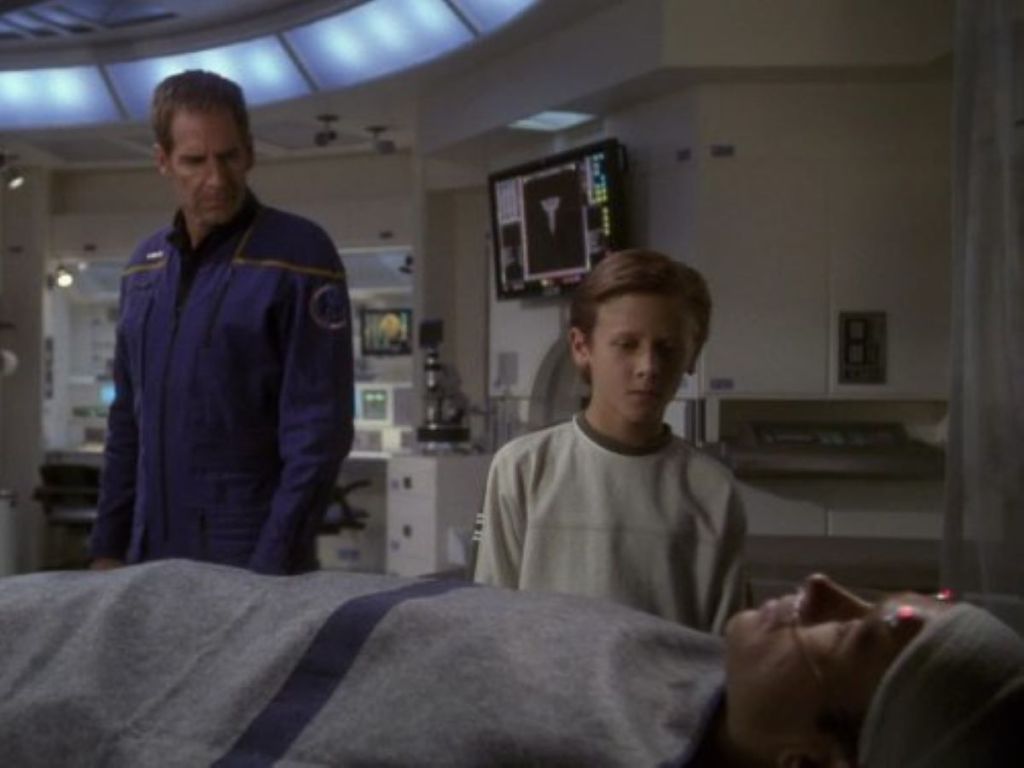
Often seen as Enterprise’s masterpiece episode, “Similitude” is both a philosophical allegory and an emotional gut punch. In a plot similar to the likes of Voyager’s “Tuvix” and My Sister’s Keeper and Never Let Me Go that followed it, the episode explores the ethical implications of similar real-world concepts like genetic engineering and designer babies. When Trip is mortally injured, Doctor Phlox grows a short-lived clone—Sim—to harvest tissue for a transplant to save Trip. But as Sim rapidly grows and forms bonds with the crew, he begins to question why his life must be sacrificed.
The episode confronts viewers and characters alike with an impossible ethical dilemma, we care about the ‘real’ Trip, but we also care about Sim as his own person. Ultimately, it’s a story about how even the shortest life is meaning full and can leave a lasting impact on those around them. Archer is forced into darker choices than any captain before him. Connor Trinneer gives a stunning dual performance as both Trip and Sim, and Jolene Blalock shines as T’Pol, torn between her feelings for both men. “Similitude” is the kind of story that could only happen in Star Trek, and the kind that lingers long after the credits roll. It’s hardly surprising that writer Manny Coto, would be brought on board as producer for season 4.
All four seasons of Star Trek: Enterprise are streaming now on Paramount+. Do you have a favorite? Tell us in the comments!

